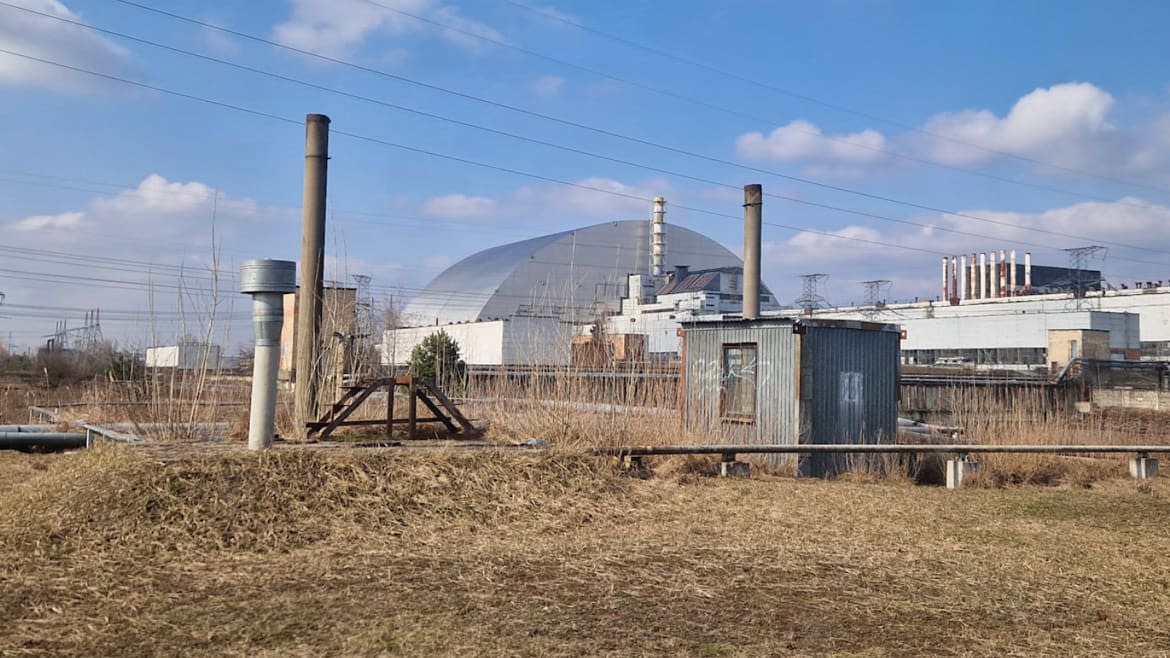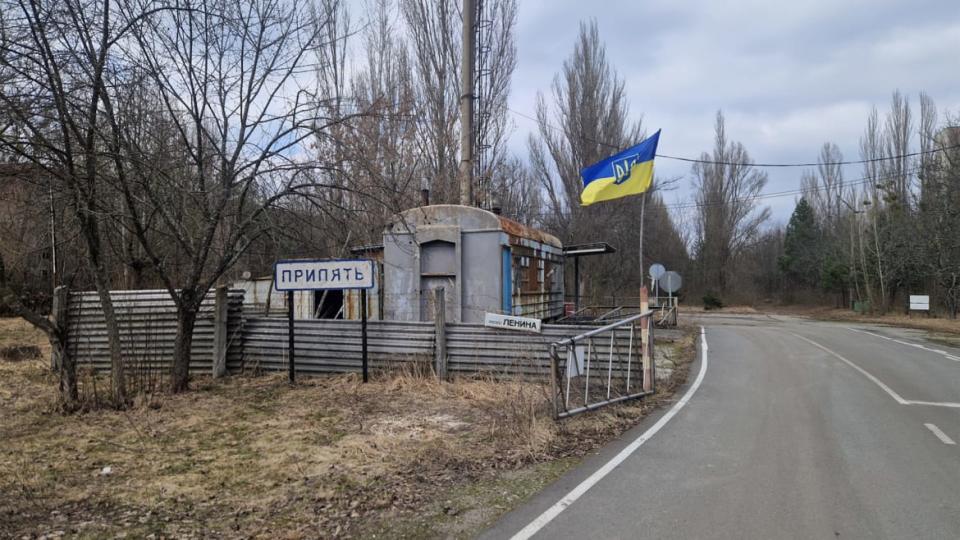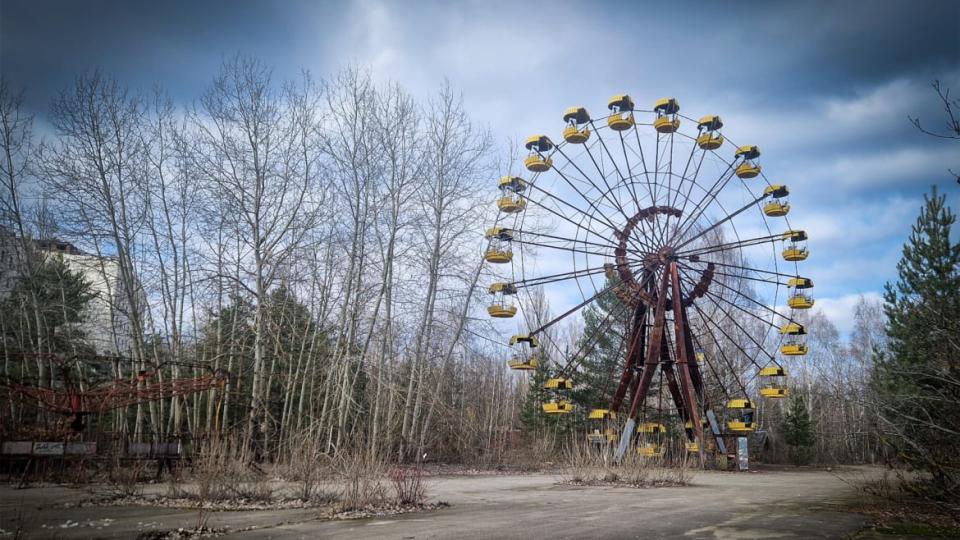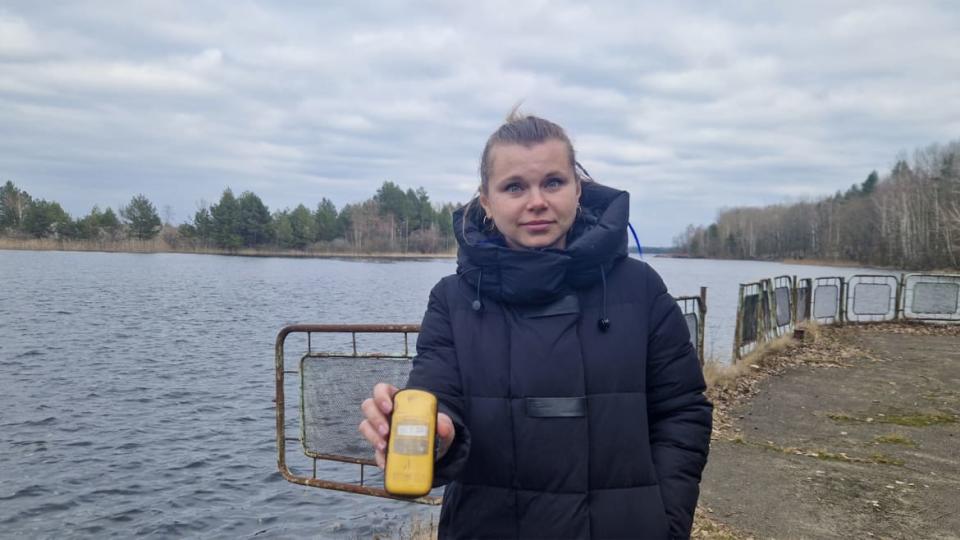The Threat of Nuclear Terror Looms Over Ukraine

CHERNOBYL, Ukraine—Nuclear terror has been the nightmare scenario ever since the Chernobyl and Zaporizhzhia nuclear power plants got caught up in Russia’s invasion of Ukraine.
The U.N. nuclear watchdog convened a meeting of Russian and Ukrainian officials last week to plead for sanity to prevail after drones struck Zaporizhzhia—Europe’s biggest nuclear power plant.
While missiles, mines, drones and gunfire continue to be deployed around nuclear plants, the risk of an accident is sky-high.
The threat also remains at Chernobyl where the radiation dust, nuclear waste and shuttered reactor at the site of the world’s worst nuclear disaster came under control of Russian forces for five weeks in 2022 after a battle which could easily have caused a second nuclear accident.
“They stationed their armor and equipment in here, just like they do in Zaporizhzhia, because they knew we could not shoot at them without risking another meltdown,” said Oksana Pychna, who made a living taking tourists around the notorious site before war broke out.
Russian forces officially withdrew from the area by April 2022. “We couldn’t believe our luck”, Pychna told The Daily Beast of the day that a Ukrainian police officer knocked on the door of her basement to let her know she was free. But Chernobyl, which infamously exploded in April 1986, is “still a war zone,” she explains as Russian troops continue to send diversion squads and hit teams to attack and harass residents and Ukrainian soldiers stationed in the area.
The radiation warning signs sway in the wind next to the Russian trenches, now overgrown with two years of grass and foliage, but the forests and fields of the Exclusion Zone are still littered with the debris of multiple disasters. You can see shell casings and spent bullets lying throughout the 20-mile Exclusion Zone, around the Chernobyl nuclear power plant.

Pychna says the day the Ukrainian army marched through the streets of her village, Pyrogovychi as the Russian occupiers fled in panic was the happiest of her life.
For weeks, their town had been cut off from the rest of the world—she had no idea whether Ukraine was fully under Russian control, or whether her relatives were still alive. One week before their liberation, she and her father had heard about a village in the region that still had phone signal, and they made the 30-mile trek there on foot. She managed to call her sister, who had fled to Spain. “We had heard you were dead,” she told her as she broke down in tears. For the first time, they learned that Ukraine had not fallen, that Kyiv was still standing.
How Chernobyl Workers Defeated the Russian Army
One of her friends, a contact in the military, warned her to take shelter in the coming days, knowing a Ukrainian counter-offensive was on its way. Yet after liberation, the family’s nightmare was not over. Her family has suffered badly in the war, with her father being killed in Bakhmut last year, and her brother being badly wounded. The Exclusion Zone remains an active conflict zone. “For months after liberation, we would still hear drones above our heads, as well as the sounds of artillery… the Russians still send saboteur teams into the Zone, who will occasionally have gunfights with our guys. Sometimes they will try and destroy our equipment stationed here. Other times they will leave mines and explosives.” Ukrainian de-mining services, the DSNS, have frequently visited the Zone to make it safe for visitors and inhabitants.
Serj Teslenko, another guide and frequent visitor to the zone also said there were Russian incursions into the zone that continued well after the occupation ended.

Soviet workers built the town of Prypiat to house 50,000 people, mostly workers at the Chernobyl plant and their families. Now it is one of the world’s most recognizable ghost cities. The local school is deserted and overgrown, its floors covered with rotted books. On the walls of one of the classrooms, there is still a series of posters relaying the history of the ‘Great Patriotic War,’ as World War II is known in the former Soviet Union. It ends with an ironic tribute to ‘Soviet brotherhood,’ a theme that Russian propagandists have consistently invoked to make out that Russia and Ukraine are the same country, and thereby justify Putin’s invasion. Visitors bring a Geiger counter with them when they visit the Zone to track radiation exposure. Most of the time, they show only two or three times what you get in Kyiv. But occasionally there are artifacts that are extremely radioactive, and the beeping of the counter goes off the charts. Near a hospital basement, there are old clothes worn by the ‘liquidators’ who were the first people to try and clean up after the disaster. Putting the counter next to the dusty pants and overalls will make it beep uncontrollably.
Perhaps its most recognizable landmark is the amusement park, scheduled to be opened a few weeks before the meltdown. A series of rusted bumper cars full of grass and weeds lie forever unused in a town clearing. A Ferris Wheel, decrepit and immobile but still standing, flies a bright blue and yellow Ukrainian flag from one of its spokes in honor of the liberation. “My son was 4 years old when the war started. It has taken him two years to become OK and happy again. He knows to get down and cover ears when a rocket lands.” Pychna said even the village drunk had lent a hand. “We had this one man, he went to the Russian soldiers, took some vodka and started drinking with them. After a while the soldiers passed out from drinking, and our guy stole their armored vehicle with all the weapons in it! The Russians searched the town for days, and beat the town drunk nearly to death, but they never found the weapons, which he had hidden at a remote point in the zone.
Not all the Russian soldiers left when Putin ordered his troops to withdraw, she says. “The police forces did a big search of the area last year, and they found some Russian guys who had deserted their units and stayed living in the zone in abandoned houses. They said that they had preferred to live in Ukraine!” She took us to a part of the ‘Red Forest’ where a series of overgrown Russian trenches remained. The soil around Chernobyl is still some of the world’s most radioactive, as the group of Russian soldiers who dug into it found out. “Our intelligence told me that they had been forced to go for medical treatment in Belarus, but we don’t know what happened after that. Their commanders were either stupid, or just didn’t give a shit about the lives of their troops.”

Some residents have remained despite the region’s dark and cloudy history. “I still remember the day that I turned up to teach my classes, and the authorities pretended nothing had happened,” one of the Zone’s few remaining residents told The Daily Beast. Former elementary school teacher Mikhailo Petrovich, 87, survived two wars and a nuclear catastrophe, but he still lives in the house where he was born. “It is my motherland,” he said. He was forcibly evacuated, along with all the Zone’s residents after the nuclear disaster in 1986 but chose to return in 2000 to the tiny town of Chernobyl where he was born. He takes us to his shed, which is full of shell casings, spent bullets and weapon parts left here from battles in World War II, including the still functional chassis of what appears to be a German MP40. He says the terrible fate of the surrounding lands is unsurprising. “The name of the town means ‘black story’ so something bad was always going to happen.”
The rest of the world is hoping that there have already been enough accidents at the site of Chernobyl, which cannot rest easy again until the war against Russia is won.
Get the Daily Beast's biggest scoops and scandals delivered right to your inbox. Sign up now.
Stay informed and gain unlimited access to the Daily Beast's unmatched reporting. Subscribe now.

